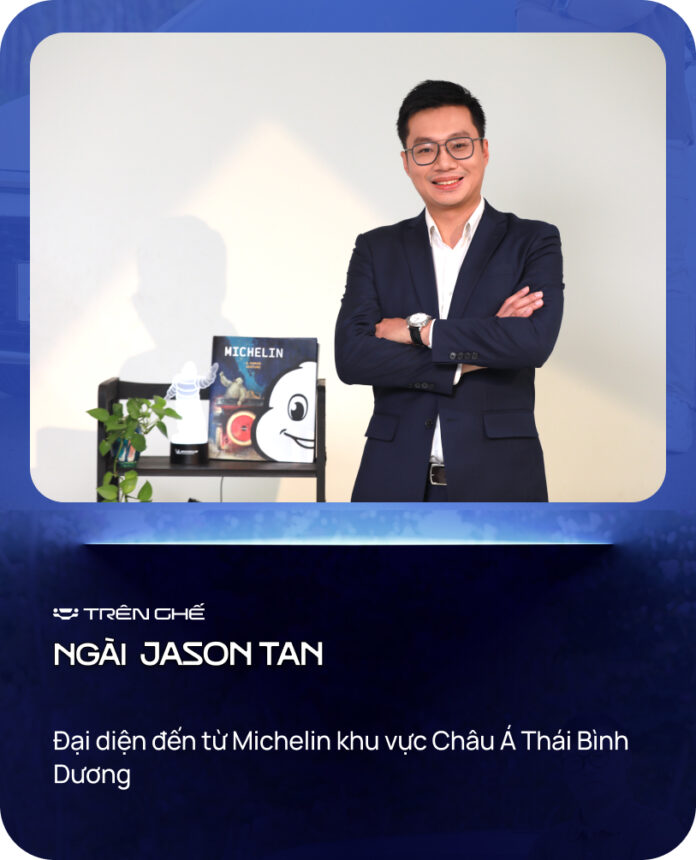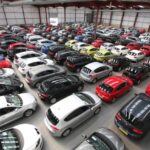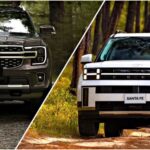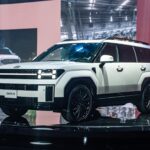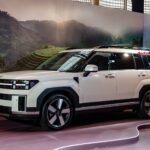Here’s an overview of the Trên Ghế 133 show, broadcast on June 19th on HTV9.
Hot Topics
The June automotive market is buzzing with extensive promotions, especially for SUVs, with many models offering discounts of up to hundreds of millions of VND.
Volkswagen Touareg stands out with incentives of up to 331 million VND. As a result, the Elegance trim is now priced at 2.368 billion VND, while the Luxury trim costs 2.768 billion VND, significantly undercutting rivals such as the BMW X5, Audi Q7, and Lexus RX in the mid-size luxury SUV segment.
In the MPV segment, the Kia Carnival is also witnessing substantial discounts. Some dealerships are offering the 3.5G Signature gasoline version at a reduced price of 1.549 billion VND, a discount of 210 million VND. The 2024 New Carnival also sees discounts of around 100 million VND. However, this price for the gasoline version is still less attractive than its diesel counterpart.
Hyundai is offering 100% registration fee support for its flagship SUVs, the Santa Fe and Palisade, throughout June. Accordingly, Hyundai Santa Fe buyers can save between 106 and 163 million VND, depending on the variant and registration location. Under similar conditions, Hyundai Palisade buyers will receive a discount of 146-190 million VND.
Lastly, the Suzuki Jimny VIN 2024 model also comes with a full registration fee waiver, equivalent to 80 million VND in June. Some dealerships are offering additional gifts and promotions, bringing the total savings to over one hundred million VND.
In the Hot Seat
In this special segment, we are pleased to welcome Mr. Jason Tan, Michelin’s representative for the Asia-Pacific region, and Mr. Phạm Quang Đạt, Michelin Vietnam’s product specialist, to discuss the award-winning Michelin Primacy 5 tires.
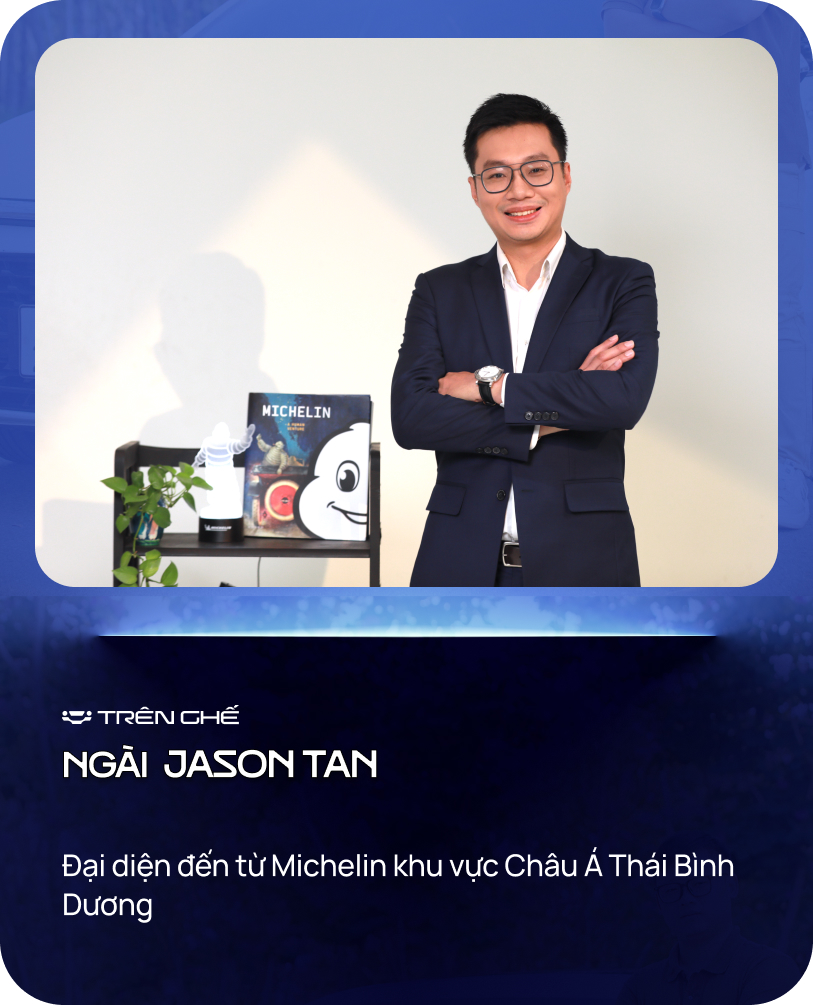
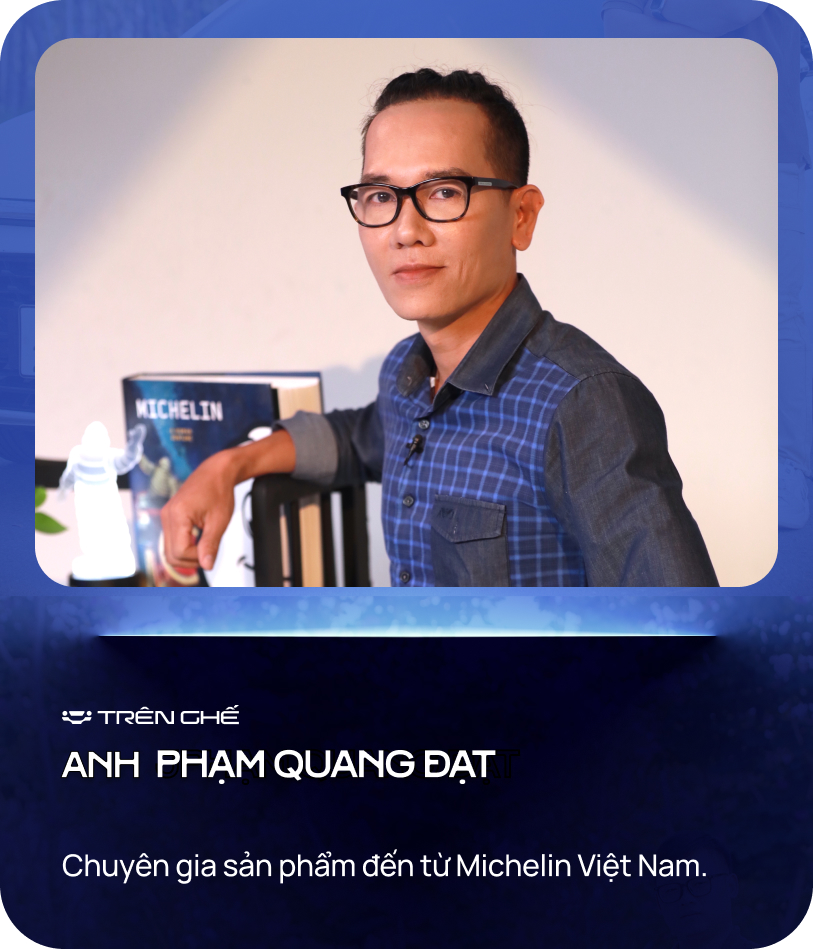
Thank you both for joining us today. Firstly, congratulations to Michelin on winning the “Tire of the Year 2025” award for the Primacy 5 line.
Thank you. Michelin is very proud of this achievement.
The Michelin Primacy 5 tire range has just won the prestigious “Tire of the Year 2025” award. This award is highly regarded in the tire industry and is judged by independent experts based on stringent criteria. So, what do you think are the key factors that led to this product winning the award and gaining the trust of both professionals and consumers?
The core lies in its ability to maintain comprehensive and balanced performance across all aspects. Michelin does not aim to be number one in a single field but strives for excellence in all areas. This is precisely what consumers truly expect—a product that can reliably accompany them on all roads, regardless of dry or wet conditions, and whether the tires are new or worn.
This includes driving comfort, reduced noise and vibration, superior longevity, enabling vehicles to travel longer distances, and, of course, fuel efficiency.
The biggest challenge in tire development is that improving one aspect sometimes comes at the expense of another. However, with Primacy 5, thanks to the remarkable efforts of our Research and Development team, we have been able to enhance performance across the board without any trade-offs.
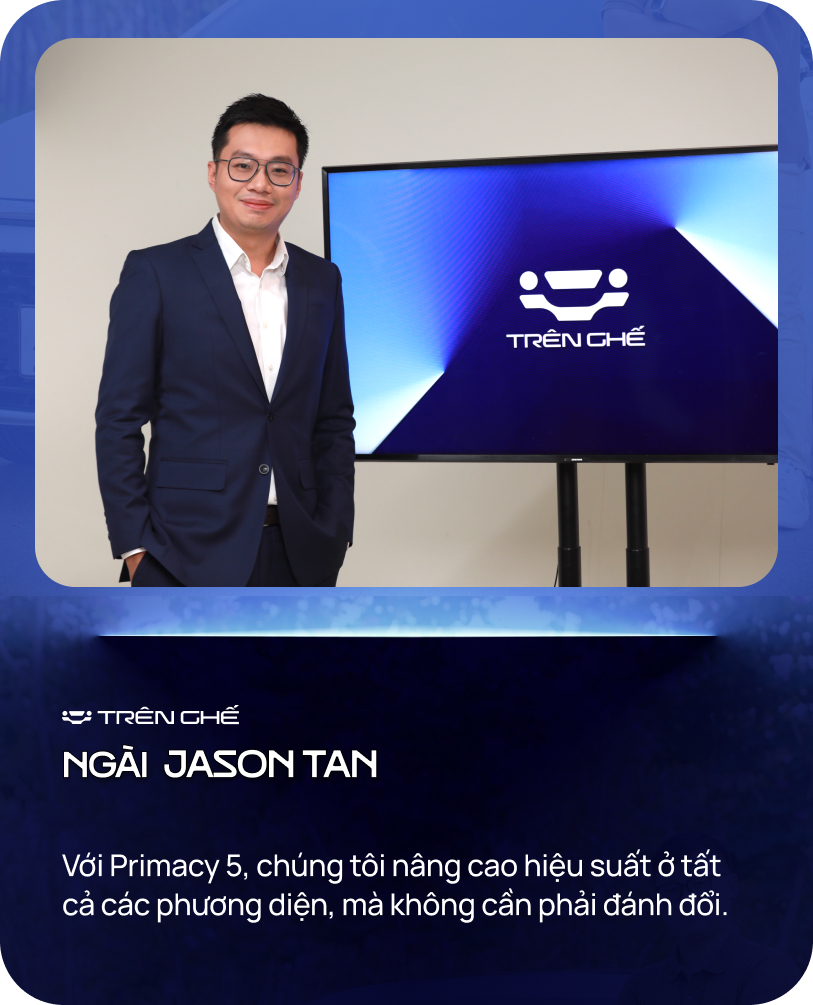
Through your story about tires in general and Primacy 5 in particular, we can see that tires reflect many trends in life. Lately, all companies, especially Michelin, have been pursuing sustainability. In your opinion, is sustainability just a trend, or does it truly matter to consumers?
This is one of my favorite topics. At Michelin, we pursue a strategy of “Sustainability in Everything.”
Michelin’s development strategy focuses on balancing People, Operational Efficiency, and the Planet. This shapes all our activities and guides us daily.
We believe that the future of this planet is of utmost importance, and it depends on how we protect it and its resources starting today. Therefore, for us, sustainability is a core consideration in every decision we make.
For instance, in our business operations, we assess the environmental impact of our products throughout their life cycle. The keyword here is “life cycle,” meaning we don’t just focus on the tire itself but evaluate the entire journey of the product: from raw materials to use and, finally, recycling.
At each stage of the product’s life cycle, we conduct assessments of 16 different environmental impacts, categorized into main groups such as Human Health, Fossil Fuel Usage, Biodiversity, and Climate Change. In other words, we thoroughly study the entire value chain.
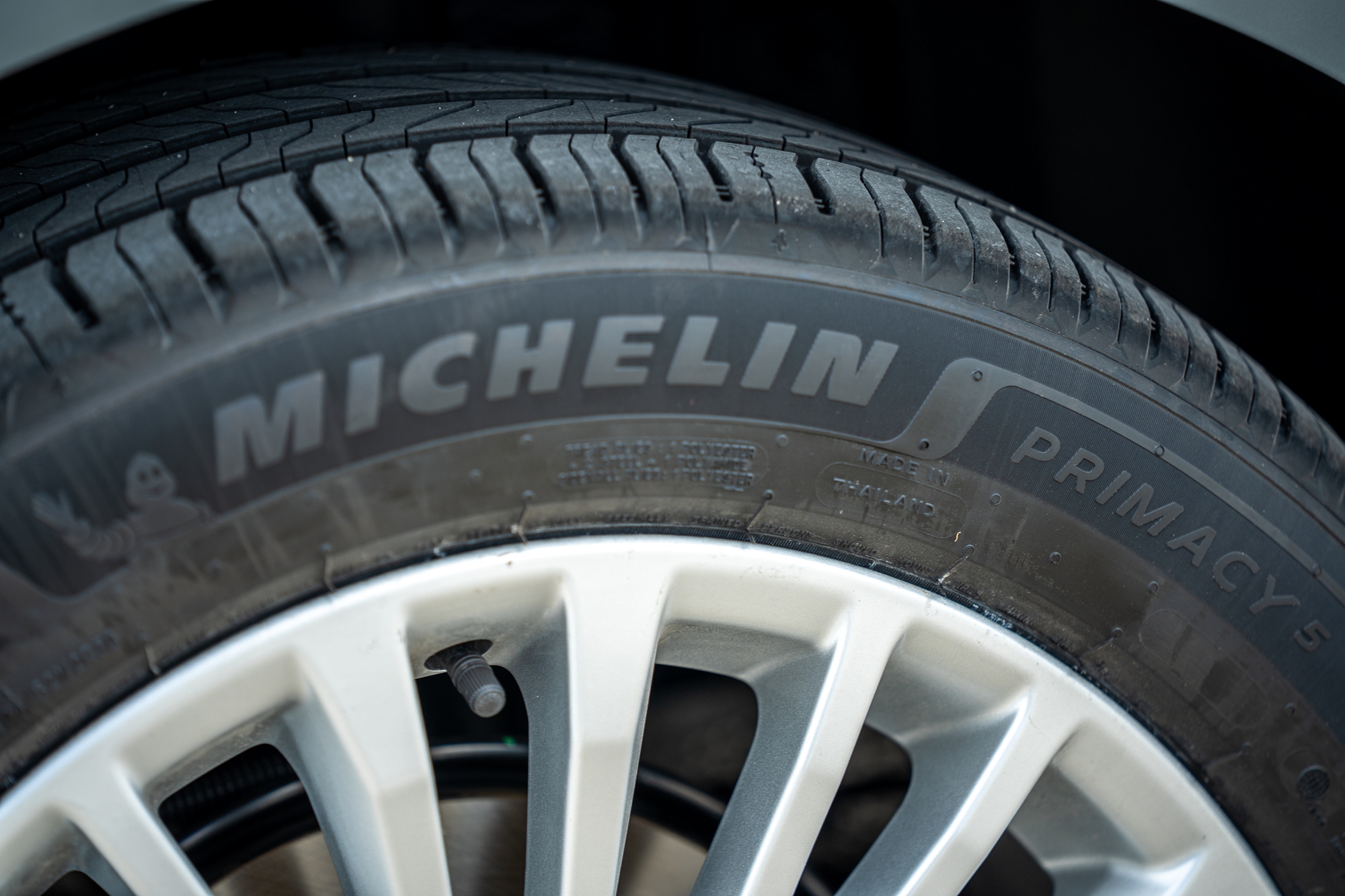
Michelin assesses the environmental impact of tires throughout their life cycle. Image: Michelin
At Michelin, we have been investing in such solutions for over 30 years, actively contributing to environmental protection.
We are pioneers in advocating for stricter regulations in the tire industry. I believe this is necessary. For example, the EPR regulations in Vietnam on extended producer responsibility mandate manufacturers and importers to collect and recycle products after their end of life.
We welcome and comply with Measure E17 issued by the Vietnamese government, aiming to reduce fuel consumption. Reducing fuel consumption not only saves costs but also helps reduce national carbon emissions. By 2030, this measure aims to allow only vehicles with fuel consumption between 4.7 and 6.4 liters per 100 km to be marketed.
Tires play a crucial role here, as they account for 20% of a vehicle’s fuel consumption. At Michelin, we are committed to our partners, customers, and future generations.
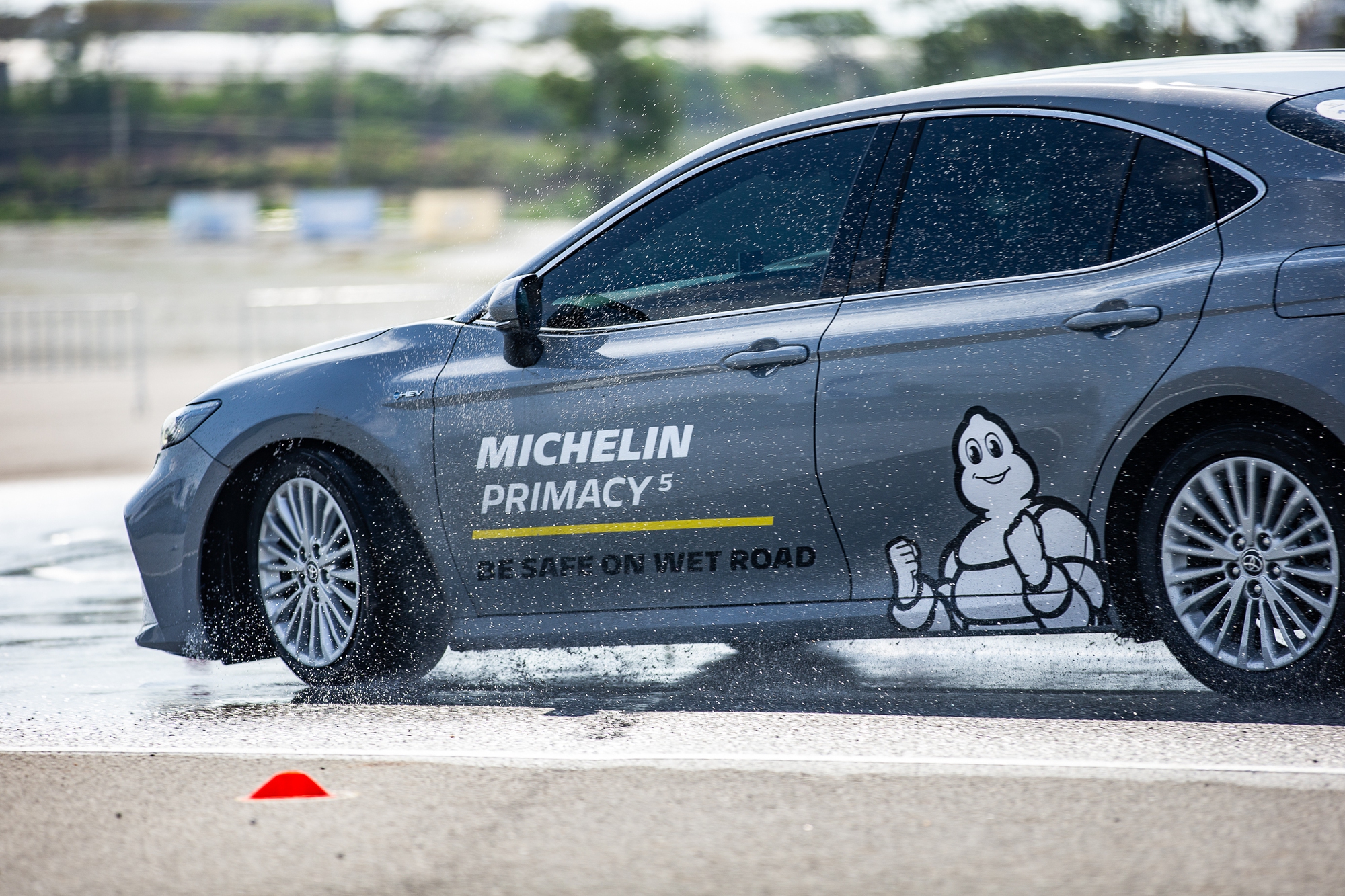
Tires account for 20% of a vehicle’s fuel consumption. Image: Michelin
Do all these efforts increase the product’s price, sir?
When designing a tire, we always aim to deliver the highest value throughout its life cycle. We focus our investments on research and development, not just to improve performance but also to enhance safety, durability, and fuel efficiency.
Ultimately, we don’t just produce tires; we build trust and peace of mind. To achieve this, Michelin must instill absolute confidence in consumers, ensuring that their investment in our tires is worthwhile.
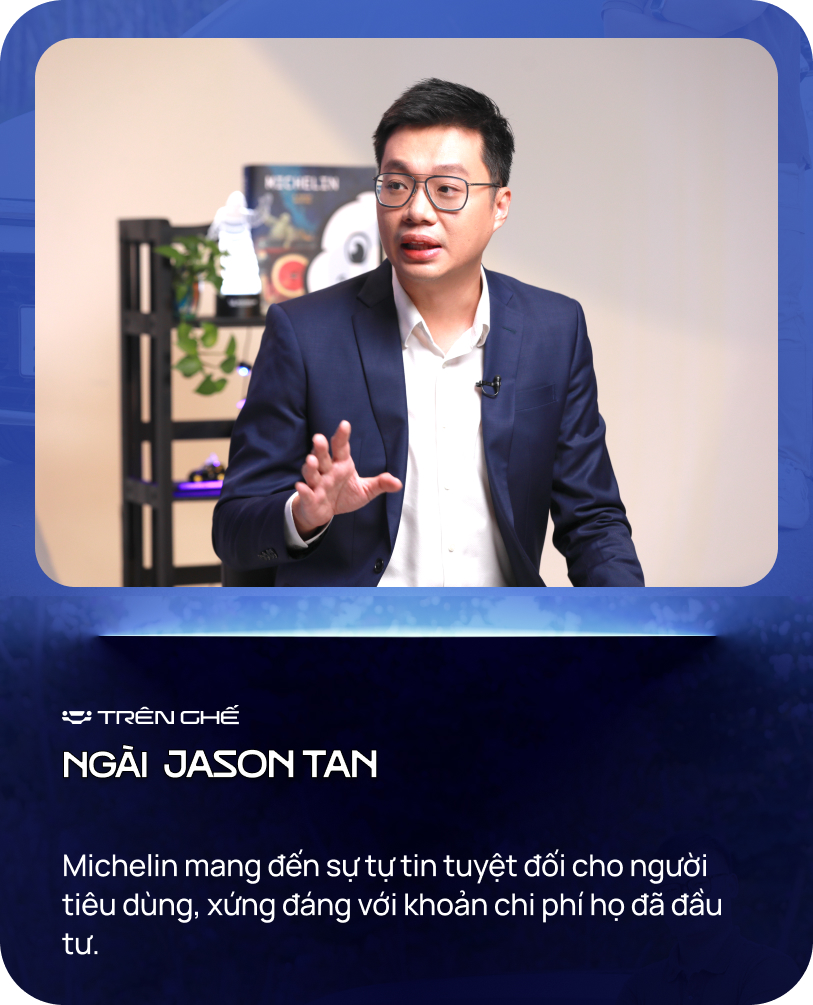
Mr. Phạm Quang Đạt, some believe that tire products are only good in the initial stages. As a product specialist, what is your take on this?
Firstly, let’s talk about product longevity. The Michelin Primacy 5 tire has a 24% longer lifespan than other products on the market. On a passenger car with four tires, each tire accounts for 25%. So, if you use a full set of four Michelin tires, you will save the cost of one tire.
The second factor is rolling resistance. This specification on the Michelin Primacy 5 is 13% lower than that of other products on the market. This helps vehicles conserve energy better. In electric vehicles, this means improved battery life, while in internal combustion engines, it translates to better fuel efficiency.
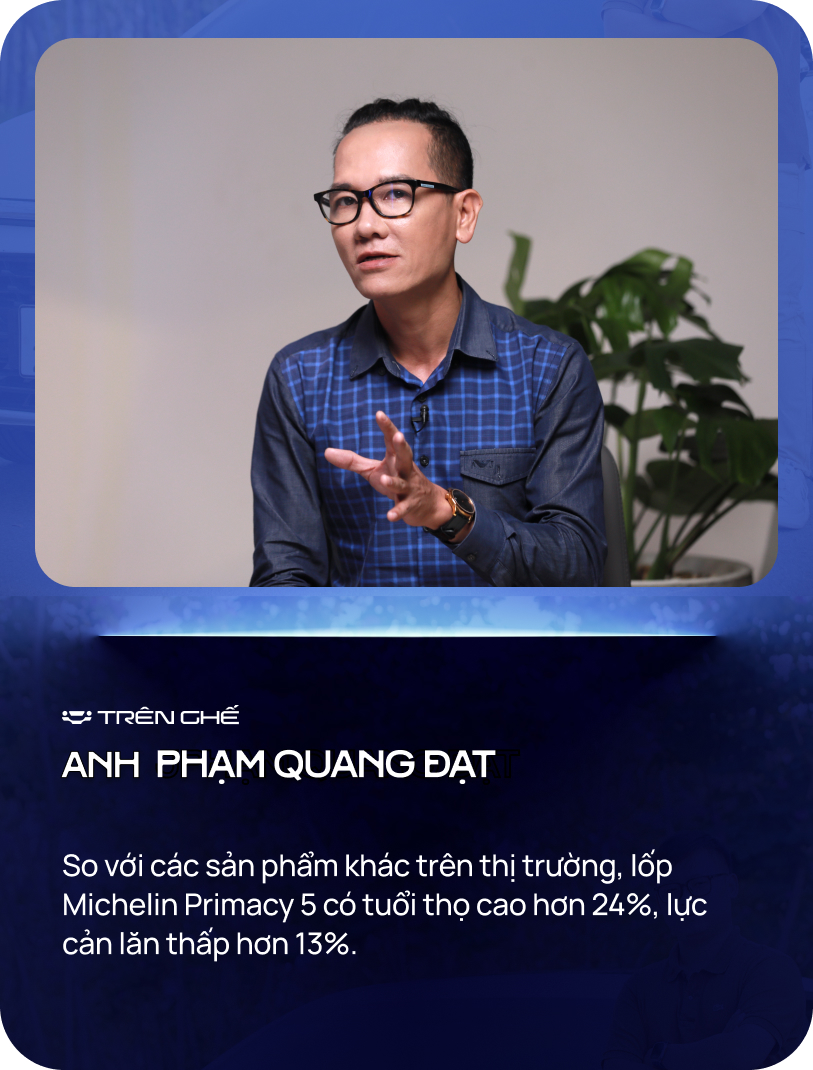
When buying tires, consumers often have many concerns, as different types of vehicles, such as sedans, MPVs, CUVs, SUVs, and pickups, have different requirements. So, for each type of vehicle, what criteria should consumers consider when buying tires?
I can give you an easy-to-understand example—just like when we buy shoes. Different activities like walking, commuting, or working in an office require different types of shoes. The same goes for tires. Choosing the right product for your specific needs is essential.
Specifically, sedans, MPVs, and CUVs with a unitary body are typically used for urban, highway, or long-distance driving. In this case, tire comfort, noise reduction, and safety are crucial. And the Michelin Primacy 5 is the perfect choice for these vehicles.
On the other hand, SUVs are larger and have higher ground clearance, so they require tires with higher load capacity. Additionally, tires with a taller sidewall height are needed to better absorb forces and provide a smoother ride. Specialized tires for SUVs include the Michelin Primacy SUV+, Michelin Pilot Sport SUV, and Michelin LTX Trail for more challenging terrain.
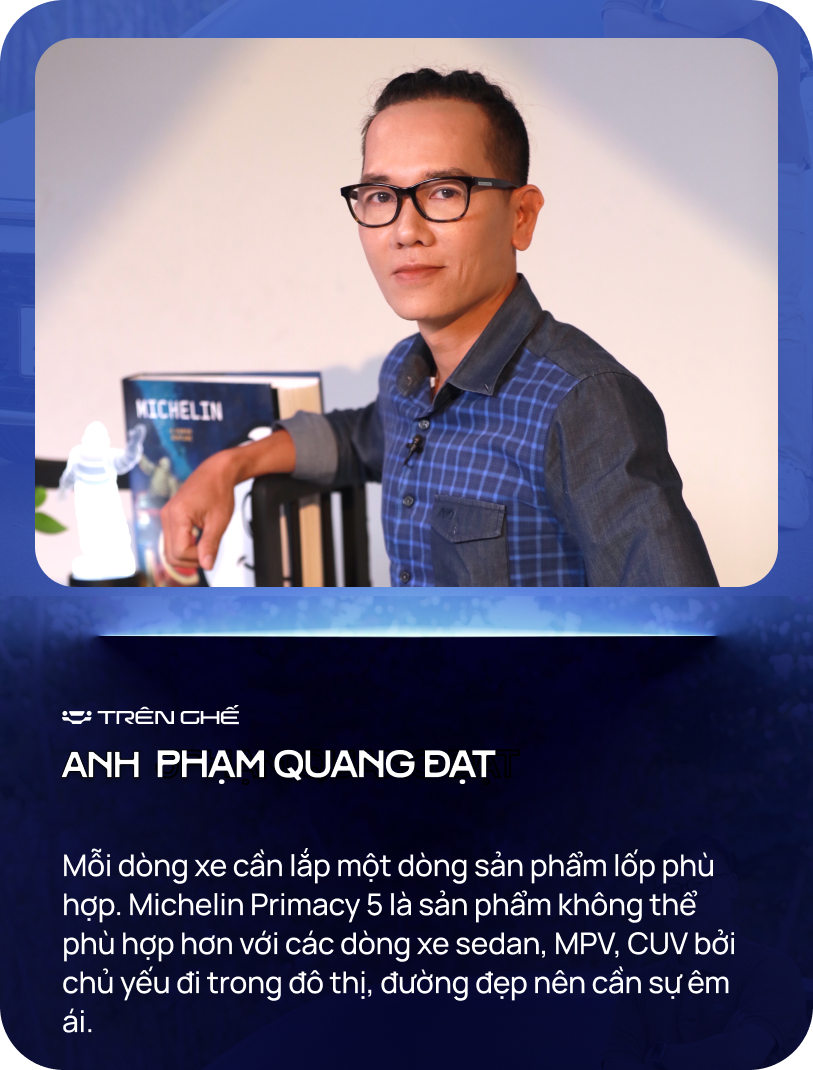
In Vietnam, the trend of green vehicles (hybrid and electric) is booming. How is Michelin catering to this market?
Electric vehicles have four main characteristics. First, they are heavier due to the battery pack. Second, they have high torque, especially at the start of motion and during acceleration. Third, they are quieter, producing less noise. Fourth, they have a limited range on a single charge.
The Michelin Primacy 5 is an excellent choice for electric vehicles in the sedan, MPV, and CUV segments. It features a brand-new rubber compound that optimizes and slows down the wear process. We know that when tires wear out, they generate particles that impact the environment.
In terms of noise reduction, the Michelin Primacy 5 employs third-generation anti-noise bars, ensuring even force distribution on the surface. This technology also ensures that the tread blocks do not collide during tire movement, minimizing noise.
These features are particularly well-suited for electric vehicles.
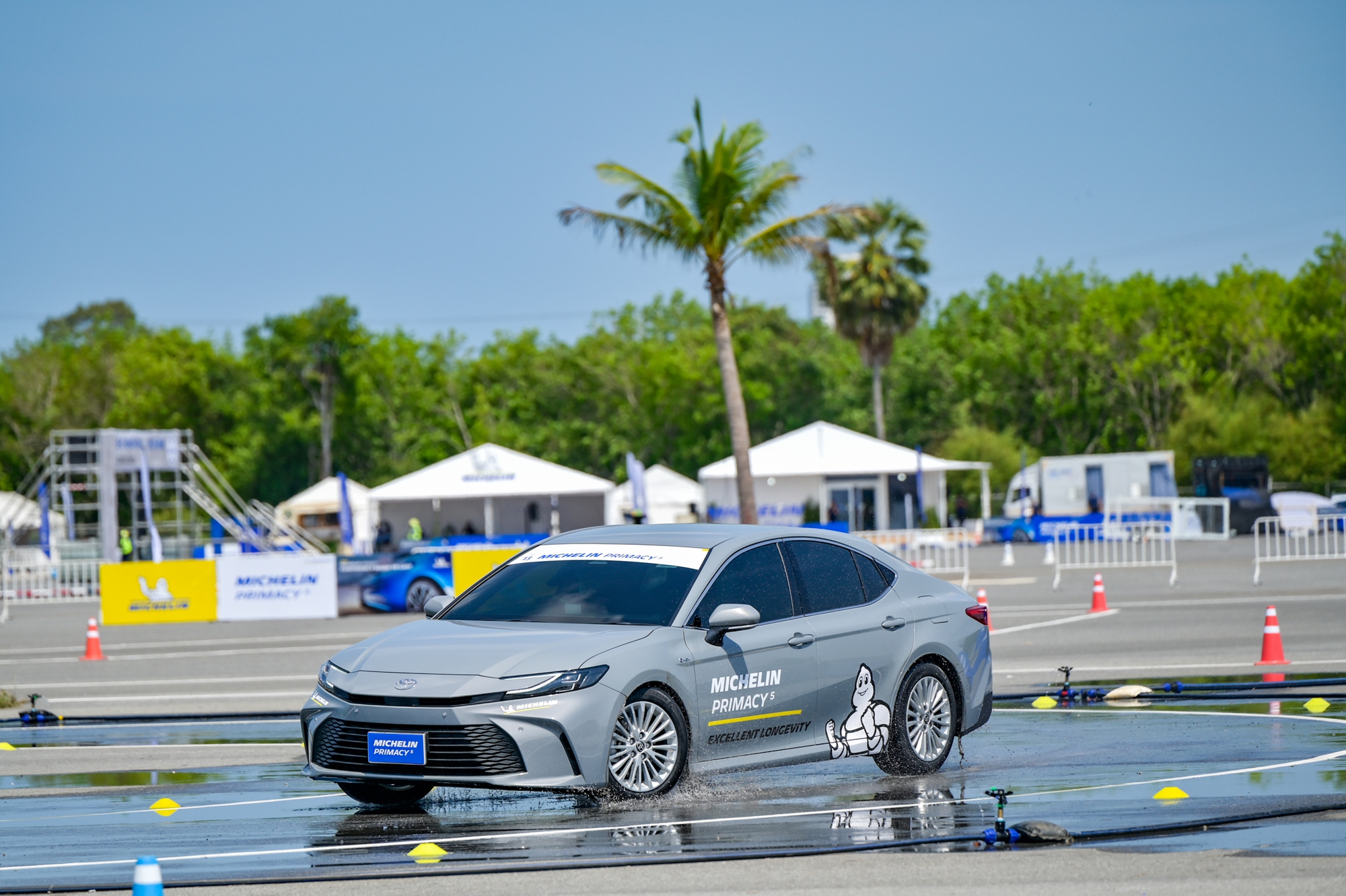
Michelin Primacy 5 tires have high load-bearing capacity and use a new rubber compound to slow down wear. Image: Michelin
Thank you very much, Mr. Đạt, for sharing your technical insights. I had the opportunity to attend the Primacy 5 launch in Thailand, and I felt very safe and “happy” driving a car equipped with these tires. So, the Primacy 5 truly deserves the “Tire of the Year” award for 2025. Mr. Jason Tan, what does this award mean for the Vietnamese market?
I think this is the perfect time for Primacy 5 to enter the Vietnamese market. By the end of 2025, Vietnam’s highway network is expected to reach approximately 3,000 km, which will further drive infrastructure expansion and increase demand for passenger cars, crossovers, and SUVs.
As of the end of April this year, compared to the same period last year, the crossover and SUV segments accounted for about 40-45% of the total vehicle market in Vietnam. Additionally, the trend of using electric vehicles is growing rapidly in the Vietnamese market today.
I believe that by the end of 2025, electric vehicles will account for about 30-35% of the automotive market in Vietnam. Similarly, hybrid vehicles are also on the rise, with sales in the first four months increasing by 82% compared to the same period last year.
All these vehicle types in Vietnam demand high-performance tires. And that’s why Primacy 5 is an ideal choice for the Vietnamese market at this time.
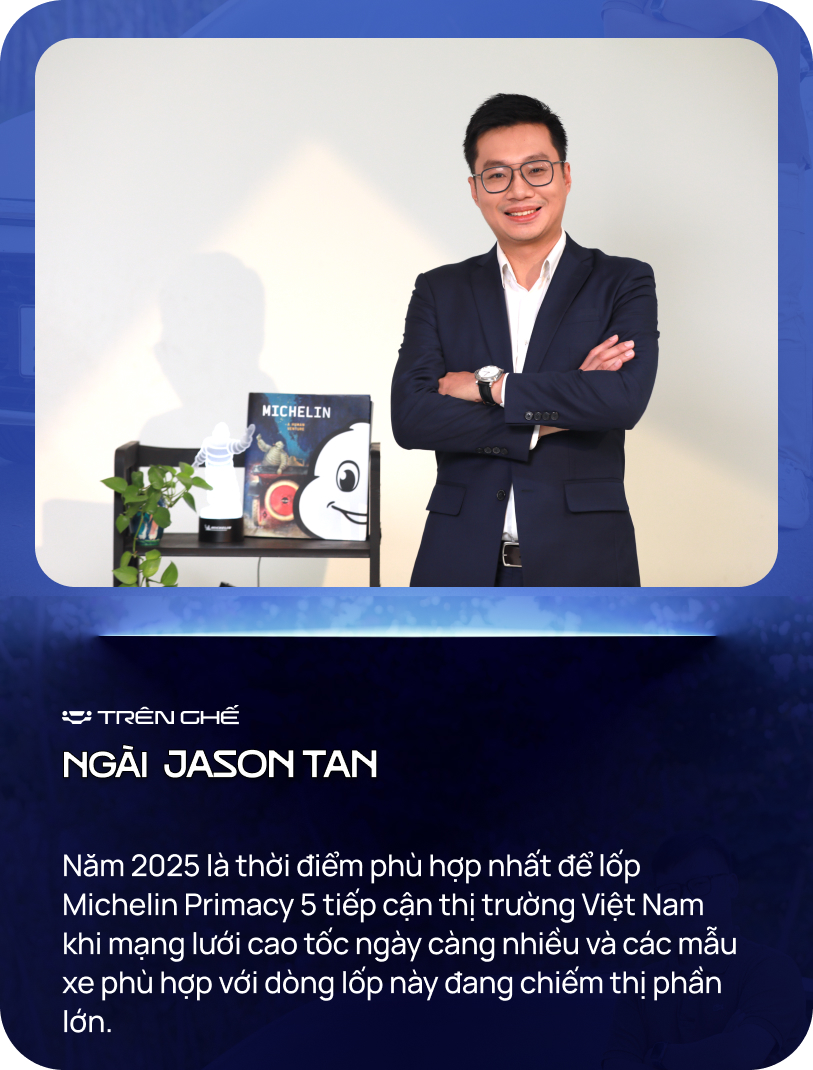
Thank you, Mr. Jason Tan and Mr. Phạm Quang Đạt, for your insights.
The Trên Ghế program is produced in collaboration with Ho Chi Minh City Television Station and VCCorp; in cooperation with Auto
‘BMW Vietnam Has Evolved: This is How We Sell Cars Now’
According to expert Le Thuong Tien, BMW Vietnam’s decision to host more test-drive events was astute, as evidenced by the subsequent rise in sales figures. However, to further boost sales, the company should consider expanding its reach beyond major cities and into other provinces.
The Hyundai Santa Fe Prestige: A Premium Offering at an Attractive Price Point.
The Hyundai Santa Fe Prestige trim is a force to be reckoned with, offering exceptional performance and a host of luxurious amenities that rival those of the top-tier model.


























